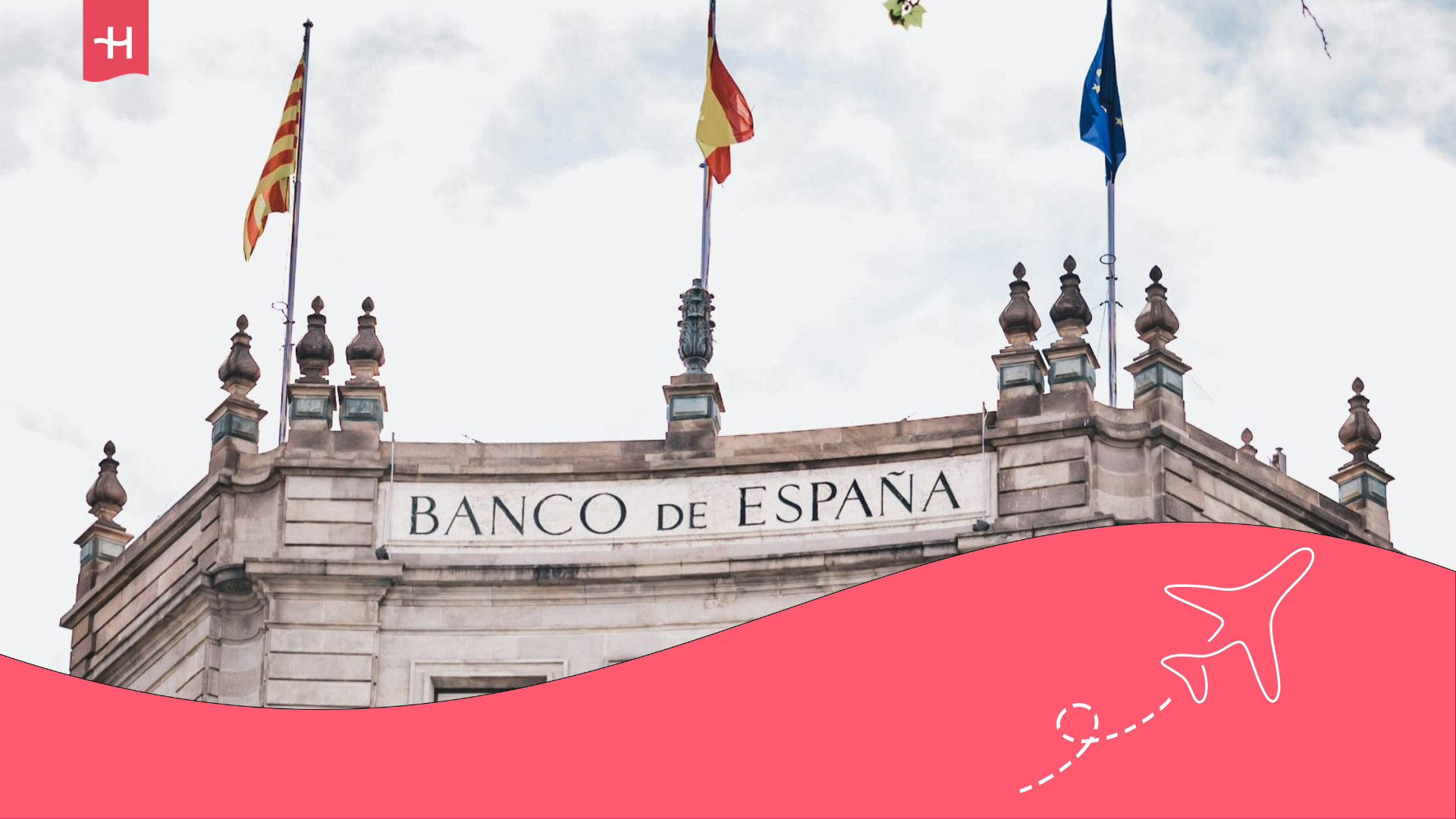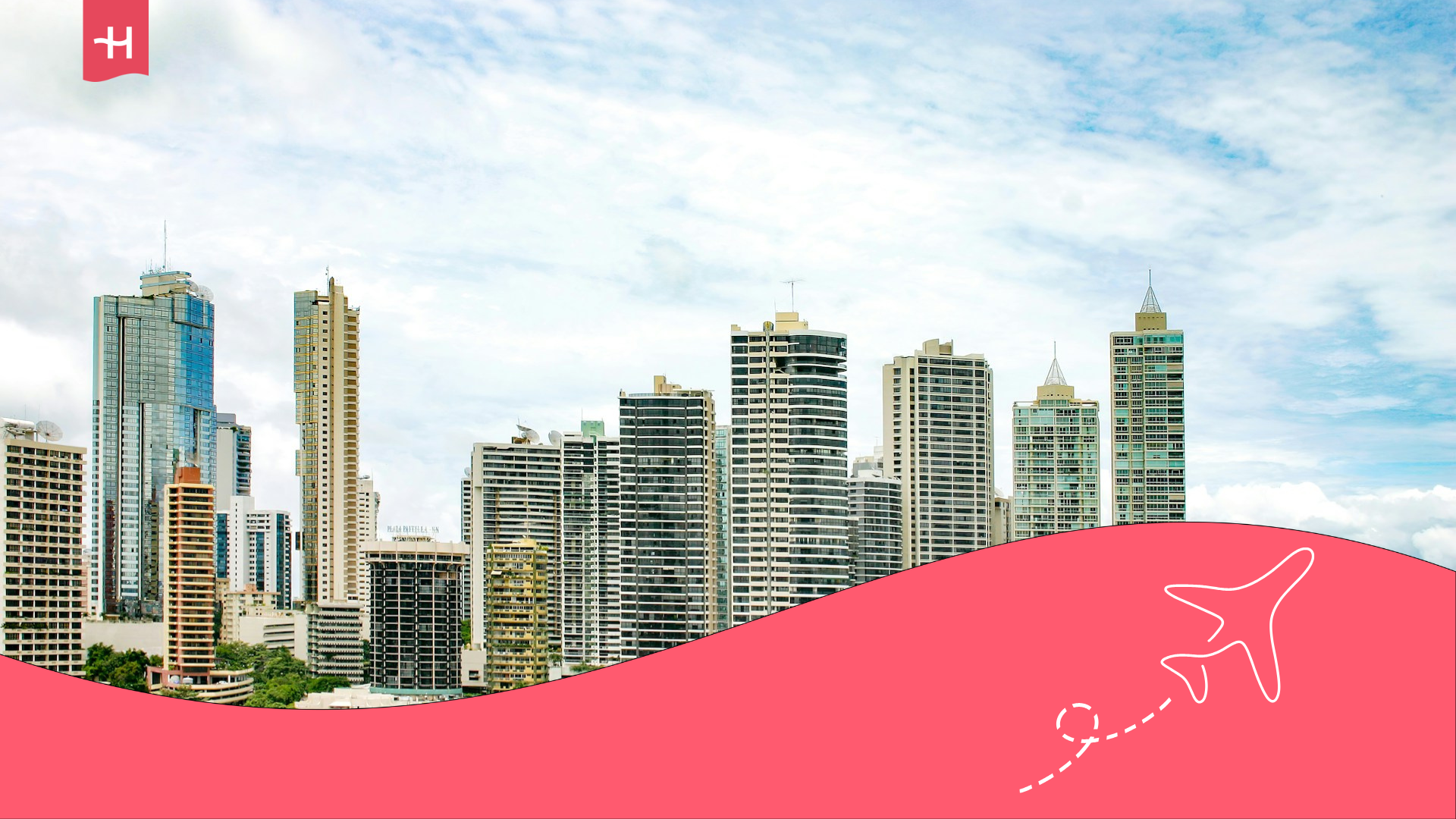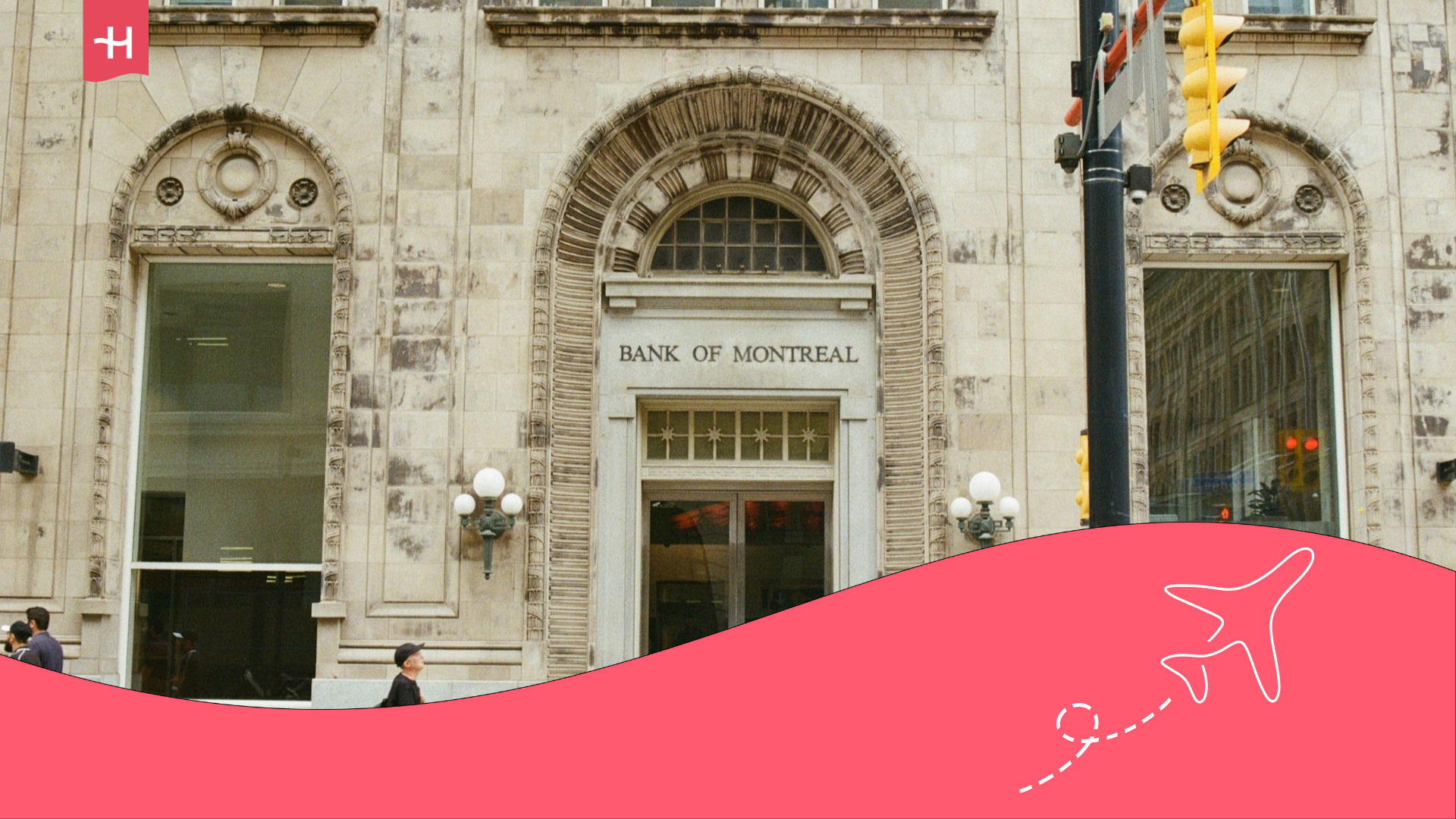Cost of living in Iceland: Food, transport, and more
The cost of living in Iceland is high, but the country compensates for this with an excellent quality of life, first-class services and great infrastructure.
Living in Iceland feels like stepping into a postcard: giant waterfalls, stunning glaciers, northern lights, and film-like villages. But it also means adapting to extreme weather, a challenging language, and one reality: the cost of living in Iceland is high. This small Nordic country ranks among the world’s most expensive, year after year. Salaries are usually high, yet newcomers (especially digital nomads, students, or families starting fresh) must clearly understand real living expenses.
To begin learning about expected expenses in Iceland, whether for a short, long, or permanent stay, this guide helps. Is accommodation in Iceland expensive? What about food costs? Do you need medical insurance or can you access public healthcare? These questions, and probably others, are now in your mind. We’ll answer them all.
At Holafly, we help you organise your budget depending on your lifestyle, whether frugal and shared or comfortable and private. Keep reading to discover how much money you’ll need to live in Reykjavik or explore Iceland long-term.
What’s the average cost of accommodation in Iceland?
As you might imagine, housing strongly impacts Iceland’s cost of living. With few people and harsh weather, supply is limited and expensive, especially in Reykjavik, home to over 60% of residents. Options range from small studios and shared houses to coliving designed for nomads, plus seasonal Airbnb rentals.
Let’s review the average costs of common choices for stays over one month.
Studios or small flats
Studios are the top choice for solo residents, especially in Reykjavik, Akureyri, and Hafnarfjörður. These 30–40 m² units are usually furnished, with central heating (essential in Iceland), private bathrooms, and integrated kitchens.
Availability is scarce, so search early. Prices vary by neighbourhood. In central Reykjavik or near universities, costs rise notably.
- Average monthly price: €1,196–1,656 ($1,300–1,800)
Coliving: a growing option for foreigners
Coliving isn’t as widespread as in other European capitals, but new spaces target digital nomads, remote workers, and international students. Most are in Reykjavik, in areas like Laugardalur, Vesturbær, and Hlíðar.
These usually provide private rooms (sometimes shared bathrooms) plus communal kitchens and coworking with high-speed WiFi. Community events, yoga, or trips are also common. So, it’s ideal for making global friends and professional connections.
- Average monthly price: €828–1,288 ($900–1,400)
One or two-bedroom flats
Travelling as a couple, with a friend, or seeking privacy? Renting a full flat may suit you. Prices rise significantly compared to studios or rooms, but searching further from the centre or in towns like Selfoss, Mosfellsbær, or Akranes helps.
- One-bedroom flat, central area: €1,656–2,116 ($1,800–2,300)
- Two-bedroom flat, non-central: €1,380–1,840 ($1,500–2,000)
Airbnb for seasonal stays
Airbnb is popular for one to three-month stays, perfect for temporary work, internships, or short studies. Many choose small houses or cabins with heating, kitchens, and stunning views.
Sought-after spots include Reykjavik, Hveragerði, and the Golden Circle area, with road links and nearby services.
- Average monthly Airbnb (long stay): €1,564–2,576 ($1,700–2,800)
Now you know Iceland’s approximate housing prices, start looking for what suits your budget and lifestyle. Remember: search early, stay patient, and check beyond Reykjavik’s centre for better deals.
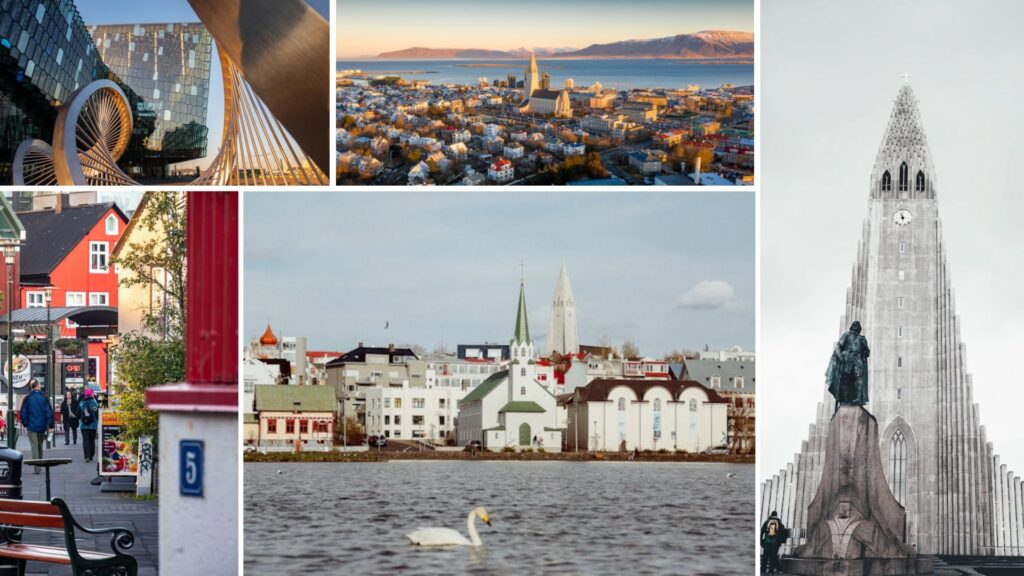
How do food prices affect Iceland’s cost of living?
Iceland imports most of its food, which directly raises prices. There’s limited local production of fish, dairy, greenhouse vegetables, and lamb. Yet most basics (fruit, cereals, snacks, drinks) come from abroad. That means supermarket prices are high, even compared with other European capitals. On the other hand, dining out is also costly, though alternating bakeries, cafés, and local eateries can help.
Supermarket prices (Bonus, Krónan, Nettó)
The three most used chains are Bonus (cheapest), Krónan (mid-range), and Nettó (widest choice, pricier). Most people shop at Bonus, adding fresh or special items from others. Here’s a table with average food costs in Iceland:
| Basic product | Price (USD) | Price (€) |
|---|---|---|
| 1 litre of milk | $1.70 | €1.56 |
| 12 eggs | $5.00 | €4.60 |
| 1 kg white rice | $3.80 | €3.50 |
| 1 kg chicken breast | $12.00 | €11.04 |
| 1 kg lamb | $18.00 | €16.56 |
| Sliced bread (500 g) | $4.00 | €3.68 |
| 250 g ground coffee | $6.50 | €5.98 |
| 1 chocolate bar | $2.80 | €2.58 |
Food prices at Iceland’s main supermarkets.
Based on this, basic groceries for one person cost about $350–500 (€322–460) monthly, depending on diet and habits.
Eating out how much does a meal cost?
Eating out in Iceland is expensive, but options exist. In Reykjavik, lunch menus at cafés or bars cost less than dinners.
| Type of Meal | Price (USD) | Price (€) |
|---|---|---|
| Simple breakfast (coffee + croissant) | $6.00–9.00 | €5.52–8.28 |
| Lunch in café or bar | $15.00–22.00 | €13.80–20.24 |
| Full dinner in local restaurant | $30.00–45.00 | €27.60–41.40 |
| Dinner in international restaurant | $40.00–60.00 | €36.80–55.20 |
| Local beer (0.5 l) | $8.00–10.00 | €7.36–9.20 |
Districts like Vesturbær, Laugardalur, and central Reykjavik concentrate most food options, from fish and chips to Korean or vegetarian.
So, to cut living costs in Iceland, cook at home often. Eating out can be an occasional treat, though affordable quality options exist.
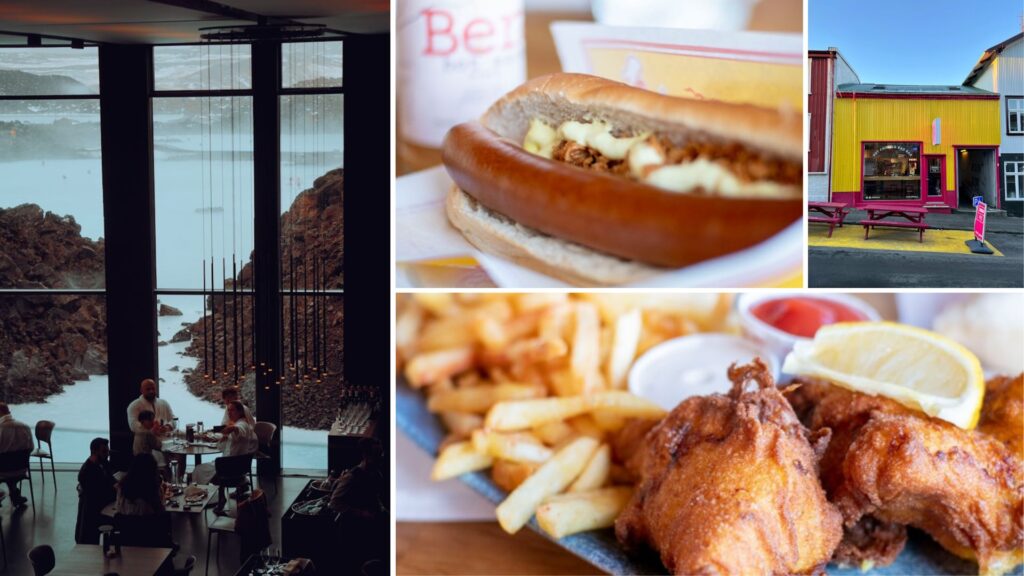
Is transport in Iceland expensive?
Getting around Iceland, especially outside Reykjavik, brings logistical challenges. The country has no railway network, and public transport is limited beyond the capital. That’s why many residents (locals and foreigners) choose their own or rented cars. Inside the city, you can move by bus, bike, or apps like Hopp.
However, for other regions, having a car (or sharing one) is almost essential. Cost of living in Iceland: public transport prices
Reykjavik and nearby areas run Strætó, the urban and suburban bus system. Frequency is good during the day. You can pay by app or rechargeable card, useful for travelling around the capital and surroundings.
| Service | Price (USD) | Price (€) |
|---|---|---|
| Single ticket | $4.80 | €4.42 |
| Day pass | $12.00 | €11.04 |
| Monthly pass | $88.00 | €80.96 |
Public transport prices in Iceland
Beyond Reykjavik, Strætó also runs intercity buses.
Still, they don’t cover every region or run often. Taxis and ride apps
Iceland doesn’t have Uber, Lyft, or Grab. Taxis are expensive, so not ideal if you want savings. You can hail them in the street or use local apps.
- Short urban ride (3–5 km): $16.00–22.00 (€14.72–20.24) Airport–city centre: $110.00–130.00 (€101.20–119.60)
Final taxi fares add base fare + waiting minutes + distance. Note: not all accept cards, so check first.
Bikes and scooters
Iceland lacks public bike systems, but private apps like Hopp rent electric scooters in Reykjavik. They’re perfect for short summer rides. In winter, many services pause due to ice and snow.
| Service | Price (USD) | Price (€) |
|---|---|---|
| Unlock + per minute | $1.00 + $0.35/min | €0.92 + €0.32/min |
| Hopp daily pass | $15.00 | €13.80 |
| Hopp monthly (60 min/day) | $59.00 | €54.28 |
Cost of living in Iceland: e-scooter rental
Fuel, cars, and electric vehicles
Owning a car in Iceland is costly but common. Maintenance and taxes are high, but many see it as essential, especially outside Reykjavik. Renting a car is also key if you’ll explore Iceland’s natural wonders. Driving in Iceland has its own rules, so learn before hitting the road.
| Category | Price (USD) | Price (€) |
|---|---|---|
| 1 litre of petrol | $2.40 | €2.21 |
| Electric charge (per kWh) | $0.18 | €0.17 |
| New car (Toyota Yaris) | $29,000 | €26,680 |
Car costs in Iceland
Iceland has strong EV infrastructure, with some free charging stations. Tax benefits also encourage electric car use.
Car insurance
If you buy or rent a vehicle, you must have at least liability insurance. Many residents add full cover due to changing weather. Here’s the average cost:
| Insurance type | Monthly price (USD) | Price (€) |
|---|---|---|
| Basic cover | $90–120 | €82.80–110.40 |
| Full cover | $150–220 | €138–202.40 |
vehicle insurance costs in iceland
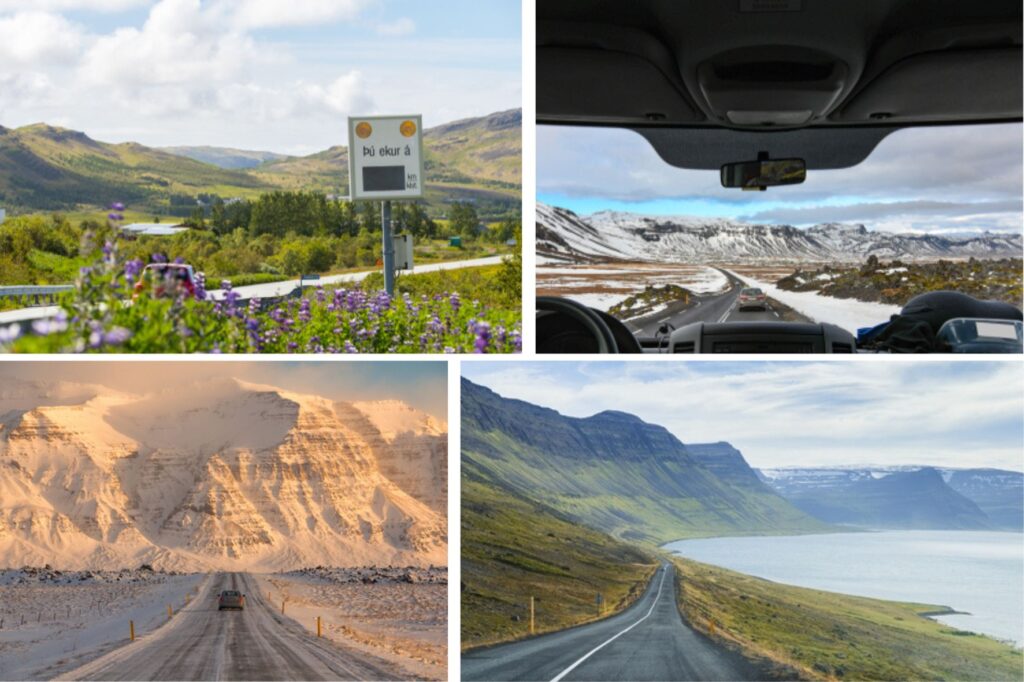
What’s the cost of healthcare services in Iceland?
Iceland offers a high-quality public health system with modern hospitals, trained staff, and strong state investment. However, it isn’t fully free, and foreigners without permanent residency or citizenship must pay full rates or get private insurance to access healthcare smoothly.
So, if you don’t want your living cost in Iceland rising sharply from unexpected bills, buy health insurance once you arrive.
Can foreigners use the public system?
Yes, but not always. Legal residents or long-stay visa holders can use public healthcare with subsidised fees. Meanwhile, temporary visitors, students without agreements, or digital nomads pay 100% of costs unless they hold valid international health insurance. For instance, a simple GP visit costs $90–130 (€82.80–119.60), while an appendicitis surgery can reach $11,000–15,000 (€10,120–13,800).
Public hospitals like Landspítali in Reykjavik are top-class but require referrals (except emergencies).
Private health insurance
If you lack residency or public cover, you’ll need international insurance. Iceland requires it for certain visas. Tourists aren’t obliged, but it’s highly recommended. Cigna Global, Allianz Care, SafetyWing, and IMG Global are common among expats.
Insurance type
| Insurance type | Monthly price (USD) | Price (€) |
|---|---|---|
| Basic (GP + emergencies) | $75–110 | €69–101.20 |
| Full (hospital + surgery) | $140–210 | €128.80–193.20 |
Approximate monthly cost of international health insurance for Iceland
How much are internet and phone plans in Iceland?
Iceland ranks among the world’s most connected nations. Coverage reaches almost all inhabited areas, with faster speeds than Europe’s average. For remote workers and online students, that’s a huge plus.
Most rentals (coliving, Airbnb, student homes) include WiFi.
Still, if you’ll rent privately or stay long-term, check the options.
Home internet Residential internet is mainly fibre optic. Síminn, Nova, and Hringdu dominate the market, offering symmetric speeds with stable connections. Packages include modem and tech support. Here is a table with the approximate costs:
| Internet plan | Speed | Monthly price (USD) | Price (€ ≈) |
|---|---|---|---|
| Síminn Fibre | 500 Mbps | $45.00 | €41.40 |
| Nova Fibre | 1,000 Mbps | $60.00 | €55.20 |
| Hringdu Starter | 100 Mbps | $35.00 | €32.20 |
Iceland home internet costs
Installations are usually free with 12-month contracts.
Short-term stays may raise the monthly fee. Mobile and prepaid plans Iceland’s expanding 5G covers most urban areas.
Síminn, Nova, and Vodafone provide flexible, contract-free prepaid SIMs. Handy for short stays.
| Plan | Details | Monthly price (USD) | Price (€) |
|---|---|---|---|
| Nova prepaid | 10 GB + 100 min | $18.00 | €16.56 |
| Síminn prepaid | 20 GB + 200 min + SMS | $25.00 | €23.00 |
| Vodafone unlimited | Data + unlimited calls | $42.00 | €38.64 |
Mobile and prepaid plans in Iceland
If you prefer not to depend on WiFi or buy local SIM cards, Holafly monthly plans are the perfect solution, allowing you to enjoy unlimited internet from the very first minute. They work with a global eSIM that gives you access to the internet in more than 160 countries. This means that if your trip to Iceland is part of a longer journey, you won’t need to buy a new eSIM every time you arrive in a new destination.
Important: If you are a frequent traveler and want to stay connected without worrying about expensive roaming or looking for a new SIM at every destination, Holafly’s subscription plans are for you. With a single eSIM, enjoy internet in more than 160 countries for a fixed price and no surprises on your bill. Travel without limits and connect easily and securely! 🚀🌍

How does leisure affect the cost of living?
Iceland is pure nature: volcanoes, hot lagoons, glaciers, and lava fields. The best part is that many of Iceland’s attractions are free or low-cost. However, museums, cinemas and cultural activities in general tend to be more expensive than in other European countries. Careful planning of your outings can help you balance your monthly budget if you live there for some time.
We now review the most common options: from a simple cinema night to entry tickets for iconic tourist attractions such as the Blue Lagoon.
Everyday leisure: cinema, theatre and urban culture
Although Iceland has a small population, Reykjavik offers a wide range of cultural activities with cinemas, concert halls, art events and public libraries. In smaller towns, options are more limited, but there are local festivals and activities organised by municipalities. Free or donation-based events are also frequent, especially in summer.
| Activity | Price (USD) | Price (€) |
|---|---|---|
| Cinema ticket | $15.00 | €13.80 |
| National concert | $30.00–45.00 | €27.60–41.40 |
| Local theatre | $35.00 | €32.20 |
| Museum or gallery | $10.00–15.00 | €9.20–13.80 |
| $10.00–15.00 | $55.00 | €50.60 |
Cost of main cultural activities in Iceland
Streaming and home entertainment
Due to the cold climate and long winters, many people spend more time at home, which is why digital entertainment plays a key role in daily life. Popular platforms such as Netflix or Spotify have similar prices to the rest of Europe.
| Service | Monthly price (USD) | Price (€) |
|---|---|---|
| Netflix Standard | $11.00 | €10.12 |
| Amazon Prime Video | $6.00 | €5.52 |
| Disney+ | $8.00 | €7.36 |
| Spotify Premium | $10.00 | €9.20 |
Cost of streaming platforms in Iceland
Some local platforms also provide Icelandic content, but they are not commonly used by foreigners.
Tourist sites and natural experiences
Iceland has one of the most awe-inspiring natural landscapes in the world. The best part? Many of its most beautiful places are completely free: waterfalls such as Skógafoss, beaches like Reynisfjara, or scenic routes such as the Golden Circle. However, there are also certain attractions that charge admission and are almost a must for visitors or residents. Our advice: try to save money on dining out or non-essential expenses, but make sure you don’t miss these iconic places:
| Touristic attraction | Price (USD) | Price (€) |
|---|---|---|
| Blue Lagoon (basic entry ticket) | $70.00 | €64.40 |
| Sky Lagoon (acces withous rituals) | $56.00 | €51.52 |
| Perlan Museum (Chapel + auroras) | $25.00 | €23.00 |
| Whale watching (3 hours) | $90.00–110.00 | €82.80–101.20 |
| Þingvellir Park | Free | Free |
Tourism and leisure costs in Iceland Conclusion: is the cost of living in Iceland high?
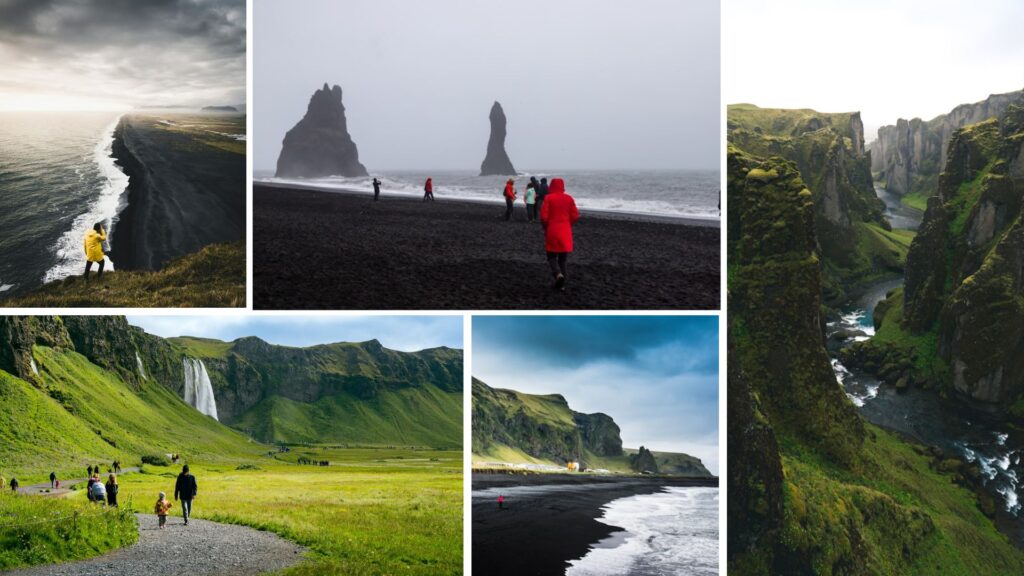
Conclusion: Is the cost of living in Iceland high?
Living in Iceland is not for everyone, but for those who take the leap, it offers a truly transformative experience. It is a country where the connection with nature is constant, the air is pure, and everyday life flows with calm, order and safety. Housing, food, transport, and healthcare cost more than in most European countries. Still, service quality and stability often justify it.
If you’re a digital nomad, student, or remote worker with income in strong currency, Iceland could be extraordinary. You’ll just need planning, warm clothes, and an explorer’s spirit.
FAQs about Iceland’s cost of living in Iceland
With a shared lifestyle (coliving + cooking + public transport), you need at least $2,200–2,800 (€2,024–2,576) monthly. Renting privately and eating out often can exceed $3,200 (€2,944).
Yes, in Reykjavik. The bus system works well, plus scooters. But beyond the capital, a car is almost essential.
Yes. Iceland offers the “Long-Term Visa for Remote Workers”. It helps foreigners work here legally without tourist visas.
Yes, but prices are higher. You’ll find global goods, yet local fish, dairy, lamb, and greenhouse vegetables are cheaper.
From April to September, seasonal rentals are easier to find. In winter, heating and travel costs increase despite lower rents.





 Language
Language 


















 No results found
No results found





